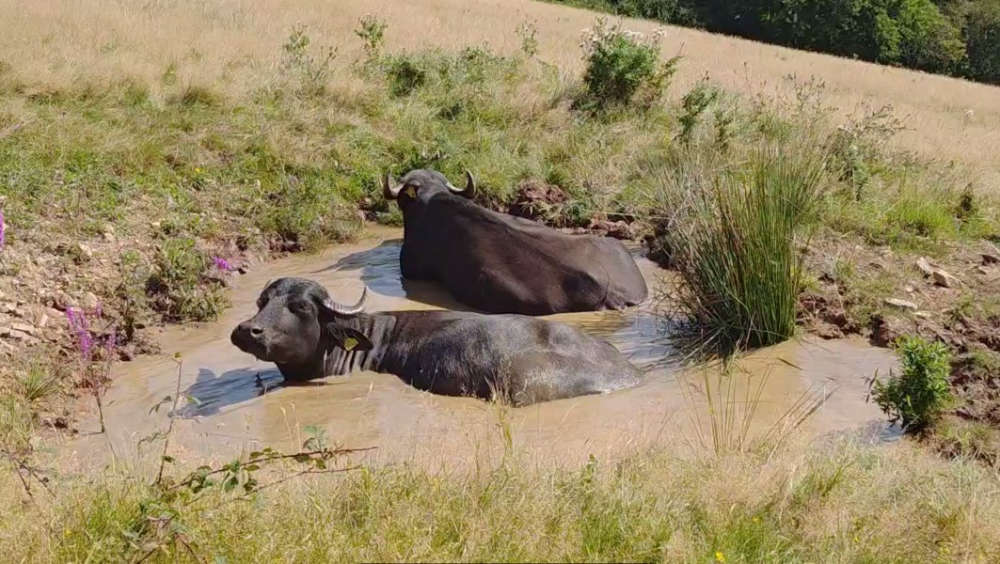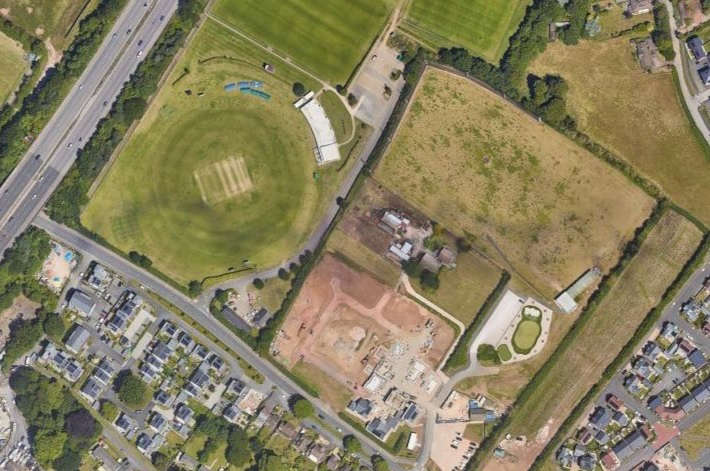
They're helping restore wild wetland
Water buffalo have been introduced on Exmoor to help turn an area back into wetland.
The beasts are living at Tattiscombe on the west of the moor and contribute to shaping the landscape without the need for heavy machinery.
Known as ‘wetland architects’, the buffalo are at an 120-acre site cared for by the National Trust that includes wood pasture, grassland, hedgerows and wetlands.
The bovines use their hooves to churn soil, create wallows and keep pools open - slowing water flow and helping it settle naturally. Their browsing behaviour clears scrub, making space for wildflowers and other species to thrive, which in turn supports insects, birds and mammals.
Murray Sharpe, farm manager for the West Exmoor National Trust, said: “Buffalo are specialised wetland animals, and this site offers an ideal habitat for them. They’re hardy, disease-resistant and able to thrive on rough forage. Their thick skin and natural wallowing habits make them more tolerant of flies and ticks than cattle, which means they’re well-suited to this landscape.
“By grazing and browsing around the many ponds, scrapes and ditches on site, they’ll help shape a broader range of habitats than we could achieve without them. In doing so, they’ll create a wealth of new niches for wildlife and play a role in driving the ecology of the site.”
The buffalo’s arrival builds on the success of the Riverlands project, completed in 2024, which restored lost wetland by diverting a stream back into its natural floodplain. This work helps the site hold water during floods and droughts, boosts biodiversity and improves the landscape’s resilience. The project is funded by the Government’s Species Survival Fund, developed by Defra and delivered by The National Lottery Heritage Fund in partnership with Natural England and the Environment Agency.
Alongside the buffalo, Mangalitsa pigs are also helping to shape the landscape. Their rooting behaviour creates bare ground that supports wildflowers and insects, while slowing surface water. These disturbed patches are over-sown with wildflower seed, which the livestock help distribute naturally as they move across the site.
Other interventions carried out by rangers and volunteers include removing underground land drains, filling in old ditches to allow water to spread more widely, and creating wildlife habitat piles from hedgerow cuttings. These piles provide shelter for insects and small mammals and encourage scrub and tree growth - benefitting birds such as willow warblers and cuckoos.
Jack Ward, Area Ranger for West Exmoor, said: “Our incredible volunteers have been at the heart of everything, from carrying out wildlife surveys to removing miles of fencing. Their energy and dedication have really brought this site to life.”
As the buffalo settle into their new home, the team will continue monitoring how the landscape responds - tracking changes in water flow, plant diversity and wildlife numbers over the coming years.
 Tens of millions to be invested in Devon's buses
Tens of millions to be invested in Devon's buses
 Fawlty Towers: The Play - REVIEW
Fawlty Towers: The Play - REVIEW
 Lib Dems hold Exmouth seat in by-election
Lib Dems hold Exmouth seat in by-election
 Paignton YMCA moves into former Mormon chapel
Paignton YMCA moves into former Mormon chapel
 Homes to be built on former Exeter driving range
Homes to be built on former Exeter driving range
